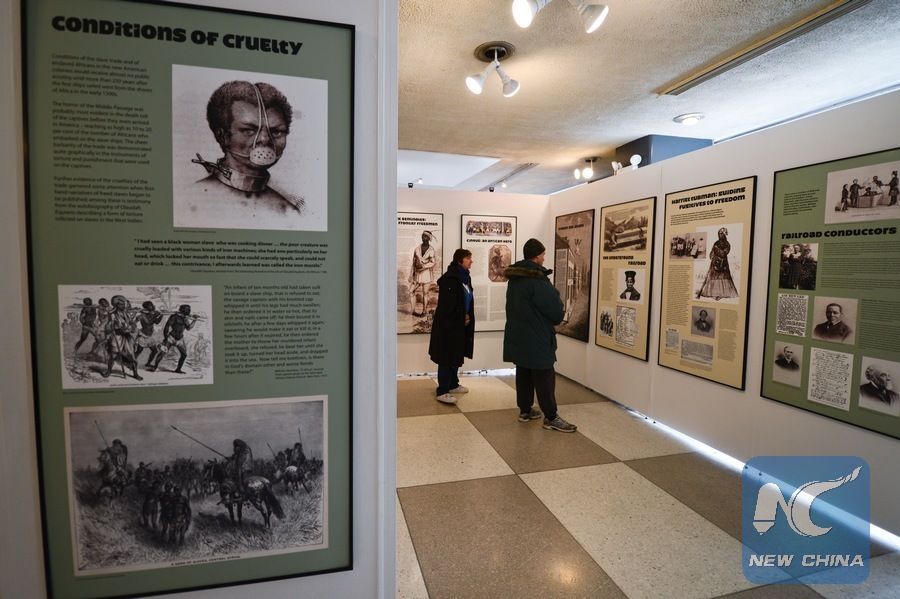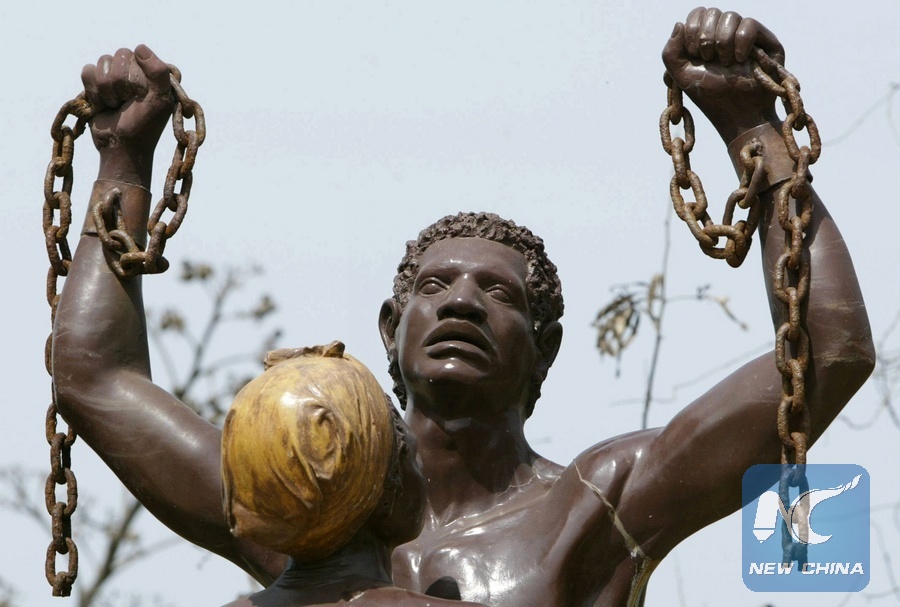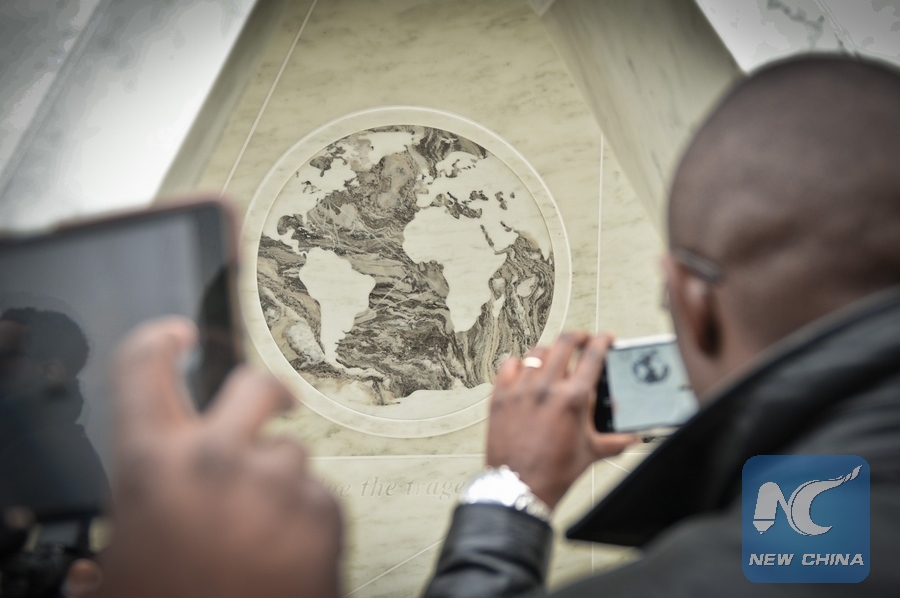
People look at illustrations on display during an exhibition commemorating the abolishment of slavery, at the United Nations (UN) headquarters in New York, on March 18, 2013. (Xinhua/Niu Xiaolei)
ARUSHA, Tanzania, June 21 (Xinhua) -- Tanzania's semi-autonomous Zanzibar archipelago has launched the East African Slave Trade Center.
Minister of the State in Second Vice-President Office, Mohamed Aboud said that the new center will serve as an important area for researchers and historians from across the globe, who might want to understand how slave trade was conducted in east Africa, before being abolished in 1873.
"We're very optimistic that the new center will make Zanzibar easily seen in the world map, due to its historic background. Key historical information collected by historians will be stored at the center," Aboud said.
Zanzibar was one of the largest slave ports in the vast Indian Ocean slave trade, which was dominated by Arab slave traders.

This photo taken on May 5, 2006 shows the liberation from slavery statue in a street leading to the House of Slaves on Goree Island, just off Dakar, where thousands of African slaves were held before being sent to the Americas. Senegal has declared slavery and the slave tradecrimes against humanity, putting the emphasis on a "duty to remember" rather than seeking financial reparations. The first of millions of slaves shipped from Africa to the Americas in the Atlantic slave trade came from the west African nation and the law passed on March 23, 2010 is the first on the continent declaring slavery a crime against humanity. (SEYLLOU/AFP PHOTO)
The Arab slave trade originated before Islam and lasted more than a millennium. The slavers hacked their way from Bagamoyo on the Tanzania mainland coast into the African interior, as far west as the Congo.The slavers traded, bribed chiefs, pillaged and frequently kidnapped to meet the high demand for slaves. The newly acquired slaves were often forced to carry ivory and other goods back to Bagamoyo.
The name Bagamoyo is derived from the Kiswahili words "bwaga moyo" which means "lay down your heart", because it was here that slaves would abandon any remaining hope of freedom or escape. Slaves who survived the long and perilous hike from the interior were then crammed into wooden boats called dhows bound for the slave markets in Stone Town, Zanzibar.

People take pictures of a newly unveiled permanent memorial named "Ark of Return" at the UN headquarters in New York, on March 25, 2015. The UN unveiled a permanent memorial at the UN Headquarters in New York on Wednesday to honor the victims of slavery and the transatlantic slave trade. (Xinhua/Niu Xiaolei)
Head of Zanzibar Cultural Heritage Center, Nuhu Saranya said the idea behind establishing the center came after realizing tourism potentials in the clove-rich island.
Saranya said the center have five photos' exhibition rooms and history of abolition of slave trade in east Africa and neo-slave trade which is ongoing across the world.
"One of the rooms will be for story telling on slave trade for Tanzanian mainland and Zanzibar as well as special room for research," Saranya said.

